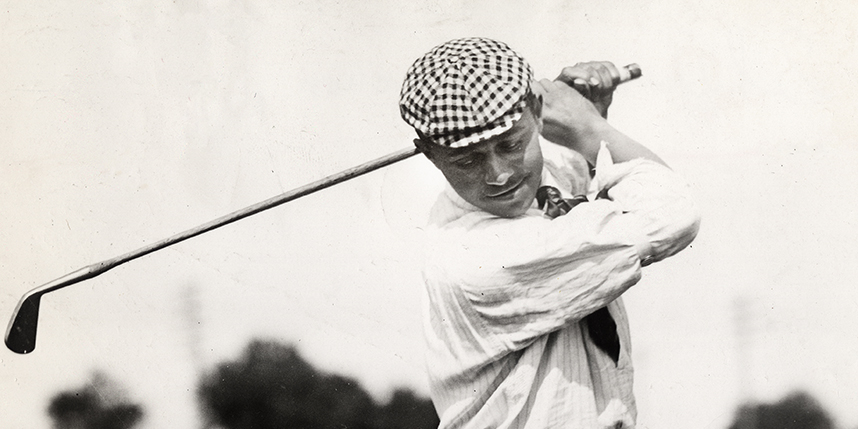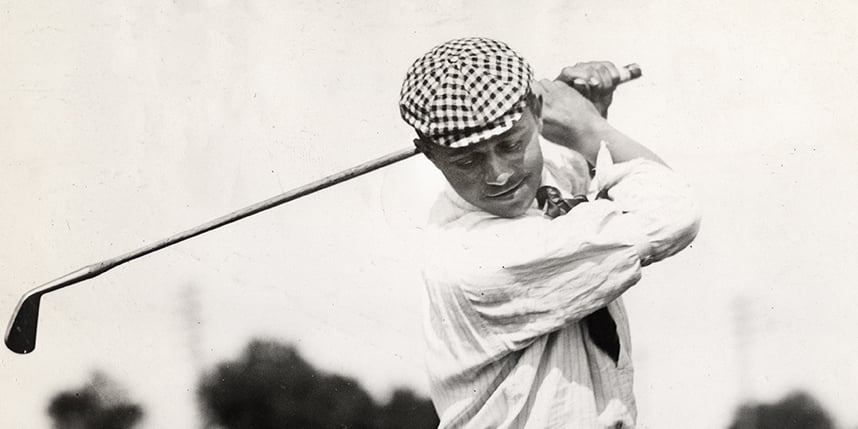John Shippen: A Golfing Pioneer
February 19, 2021 / by Jerry Stewart


The following story was written by Robert Sommers and appeared in the August 1968 edition of Golf Journal.
In the history of the United States Open, a single hole has changed the course of the championship with dramatic consequence many times. For instance, there was Sam Snead’s 8 on the 72nd hole at the Philadelphia Country Club in 1939; Dick Mayer’s 7 on the 72nd hole at Baltusrol in 1954; Ben Hogan’s 5 on the 71st hole at Oak Hill in 1956, and John Shippen’s 11 on the 31st hole at Shinnecock Hills in 1896.
Those disastrous scores of Snead, Mayer and Hogan have been well documented, but not that of Shippen.
John Shippen died recently in Newark, N.J., at the age of 90. Before his death he told an interviewer that he believed himself to be the first American-born professional. He was the son of a black father and a full-blooded Shinnecock Indian mother.
Shippen was born in Washington, D.C., but was living on the Shinnecock Indian Reservation on Long Island in 1893 when he became a caddie at the Shinnecock Hills Golf Club in Southampton.
He had been at Shinnecock for three years when the United States Open was played there in 1896. Shippen had learned the game fast, for by then he was able to beat all the members, and according to his own account, “anyone else who happened to come around the course.”
Evidently the members were impressed by his ability, for they entered him in the Open. This was only the second year for the championship. An unofficial match play Open Championship was held in 1894, by the Newport Golf Club in Newport, R.I., but the USGA was not formed until December of that year. The first Open conducted by the USGA was held at Newport in 1895, and it was won by Horace Rawlins, an assistant professional at Newport.

Photo shows John Shippen, who was the first African-American to play in the U.S. Open, the second U.S. Open in 1896 which was held at Shinnecock Hills Golf Club, Southampton, N.Y. (Negative offsite #2001-00604.) Copyright Unknown/Courtesy USGA Archives.
Twenty-eight players competed in that 1896 Open – most of the professionals were originally from Britain. But among the entries were Shippen and Oscar Bunn, a full-blooded Shinnecock. What hap pened when the other professionals discovered that Shippen and Bunn were to play is undocumented, but before his death Shippen recalled it in this fashion: The other pros in the Open held a meeting and said they would refuse to play if Bunn and Shippen were allowed in the championship. Theodore Havemeyer was president of the USGA then and was in charge of the championship. He announced to the objecting professionals that the USGA intended to conduct the Open as it saw fit, and that the championship would be held even if the field was composed of only Shippen and Bunn.
No one withdrew, and the Open went on. So ends Shippen’s recollection of the incident.
Shippen was 18 then, but even at that age he seemed a fit match for any of the others, such as Jim Foulis, Rawlins, Willie Dunn and Joe Lloyd, all giants of their day.
The Open then was conducted over 36 holes, all in one day. At the end of the morning round Shippen was tied for first place with Foulis, A. W. Smith, an amateur from Toronto ; Lloyd, Willie Tucker, of St. Andrews, USA, and Dunn.
Then in the afternoon Shippen’s dream came apart. He was doing well until he reached the 13th hole:
“It was just a little, easy par 4, and all I had to do was play it to the right. I played it too far to the right and ended up in a sand road. And I kept hitting it in that sand road until I finally finished with an 11.”
Foulis came in with 74, a record low single round score that would stand for seven years, until the rubber-core ball would come into use. He had a 36-hole score of 152 and won the championship by three strokes over Rawlins, the defending champion. In fifth place at 159 was Shippen, tied with H. J. Whigham, an amateur from Chicago. Shippen was seven strokes behind Foulis, the exact number of strokes he lost to par on the 13th hole in the afternoon round.
Thus in its infancy the USGA refused to accept racial barriers. Without those seven strokes Shippen lost on the 13th hole, he would have tied Foulis and forced a playoff for the championship.
But he didn’t, and although he played in several more Opens never again did he come so close. In 1902 he again tied for fifth, but he was 11 strokes behind Laurie Auchterlonie, 307-318. Shippen was tied that year with Willie Anderson, the defending champion, who was to win the next three Opens.
Shippen was at the Baltimore Country Club in 1899 when Alex Smith won by 11 strokes, a margin never matched; he was at the Chicago Golf Club when Harry Vardon won in 1900; at the Myopia Hunt Club in 1901 when Anderson won the first of his four championships; and he was at The Country Club in Brookline, Mass., in 1913 when Francis Ouimet defeated Vardon and Ted Ray in a memorable playoff that brought much popularity to the game.
Shippen developed a great respect for Vardon. He played in a match with the great English golfer at the Chicago Golf Club in 1900.
“He was the greatest golfer I ever saw,” Shippen said a few years ago. “One winter in exhibitions in Florida with our top three – Willie Anderson, and Alex and Willie Smith – he never failed to have the best ball.”
Shippen had many other memories of his more than 70 years in golf.
“I remember beating the great Willie Park at Shinnecock Hills while I was a caddie,” he said some time ago.
“Park was going to play Willie Dunn, the Shinnecock pro, the next day, and he wanted me to show him the course. When I beat him he gave me $5 not to tell Dunn. The next day he trimmed Dunn, 13 and 12, the worst beating I ever saw anyone take.”
Shippen not only outplayed some of the great golfers of his day, he also taught them. Walter J. Travis, the Australian-born amateur who won the 1904 British Amateur, lived on Long Island. He would come to Shippen at Bath Beach for an occasional lesson. Bath Beach is now Dyker Beach, in Brooklyn.
“Even Travis would get off his game once in a while,” said Shippen.
He also gave lessons to Henry Frick, steel magnate, at Pride’s Crossing, Maine.
Shippen believed that the great players of his day would have been a match for the great players of today.
“Willie Anderson and Alex Smith would hold their own with Jack Nicklaus, Arnold Palmer and Gary Player,” Shippen stated with some emphasis a few years ago. “So could Walter J. Travis, Harry Vardon, and Jerry Travers. The players of today have all the best of it. They have precision clubs, a much livelier and more accurate ball, and the courses are in better shape. Yet the good ones of my time shot in the lower 70s. And they never carried more than nine clubs.”
Shippen worked at a number of courses in his long career. He was at Shinnecock, Maidstone, the National Golf Links of America, Spring Lake, and Somerset Hills.
While he was at Elizabeth Town and Country Club in New Jersey, just before the turn of the century, he played in a regular four-ball every Sunday morning at the Baltusrol Golf Club, in Springfield, N.J. The other members were Willie Anderson, Tom Gourley and Henry Toler.
For almost 30 years, his last active years in golf, Shippen was the professional at the Shady Rest Country Club in Scotch Plains, N.J. He was the father of four daughters and a son, all of whom are college graduates.
Shippen looked back on his life and career a few years ago and wondered:
“Sometimes I wonder if I did the right thing when I quit school and went into golf. Maybe I should have kept going, and gone to Yale like my brother. He’s a teacher.
“I wonder until I look out the window and see that golf course. Then I realize how much enjoyment I’ve gotten out of the game, and I don’t wonder anymore.”